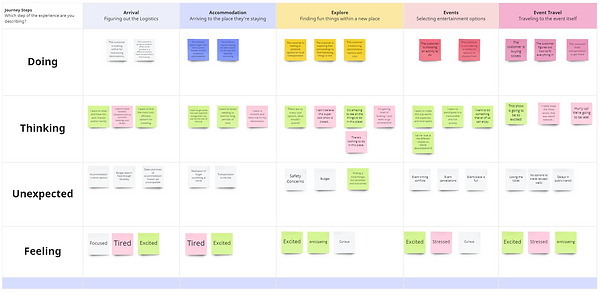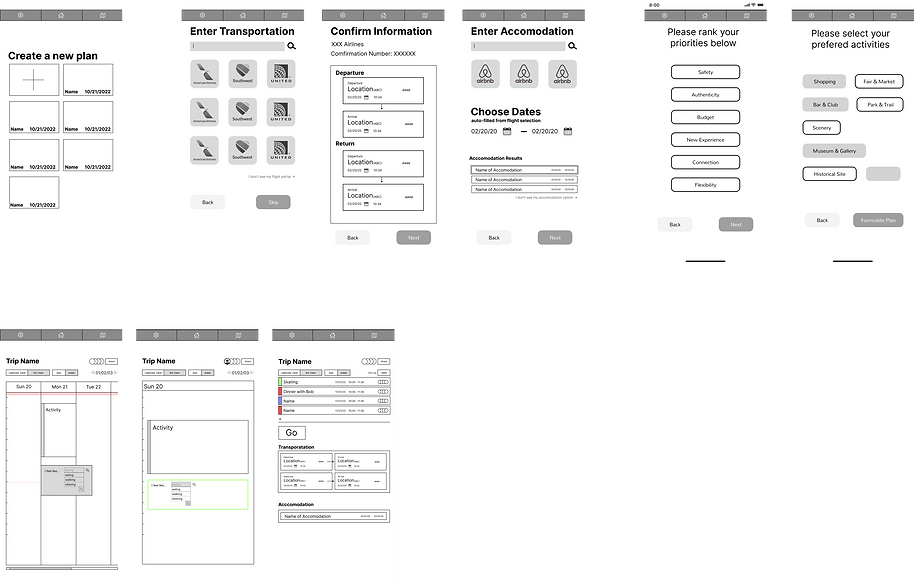Encouraging Spontaneity in Travel Planning
Vagary, Sep 2022 - Dec 2022

Problem Space: Design a mobile application in the travel planning category.
Target Users: Artists interested in creating and displaying their art in AR, art consumers interested in art installations in AR, AR enthusiasts.
Solution: a mobile application that keeps track of essential trip information, formulates a trip based on user's priorities and preferences, and allows collaboration with travel companions.
My Part: I took part in conducting extensive user research, ideating solutions that would create value, and creating the design system for the prototype. I also prototyped the onboarding section of the mobile app..
Problem Framing
Trip planning can be a stressful and arduous process, and even with the most experienced in planners, unforeseen circumstances may still arise. As risk-taking and spontaneity are a natural part of the travel process, we asked the questions:
1
我们如何帮助人们减轻在制定旅行计划时要处理大量资源的压力?
2
我们如何帮助人们了解旅行期间的意外情况并为之做好准备?
3
我们如何帮助人们的旅行增加一点自发性?
Process
Reverse Assumptions
Contextual Inquiry
“同伴、语言障碍、安全问题和运气都会导致妥协,这会在决策过程中增加更多需要的时间和精力。”
“自发性和无计划的旅游压力较小,因为计划的太多会压力很大,计划只是为了不浪费时间,意外是不可避免的。”
“我认为仍然需要旅行计划的总体结构和大纲,但可以留出空间和时间进行自由探索。”
Empathy Map

Affinity Diagramming

Customer Journey Mapping

Storyboarding and Speed-dating

Prototyping and Testing
Research Insights
1
参与者更喜欢具有松散计划的小规模冒险。
2
对自发式旅行的主要犹豫来自对安全、时间和预算方面的风险的担忧。
3
自发旅行的主要驱动力是内在的:自由、放松、兴奋和意想不到的经历。
4
用户决定通过权衡所涉及的不同因素,包括潜在的收益与风险,来做出一个自发的决定。
Mid-fi Design

Final Design

Track your trip information and be prepared for the unexpected

An algorithm that can generate suggestions based on your current emotions and interests.

A flexible framework and modular schedule to organize your trip.

Collaborate with your friends to plan your newest adventure.
Here's a clickable prototype!
